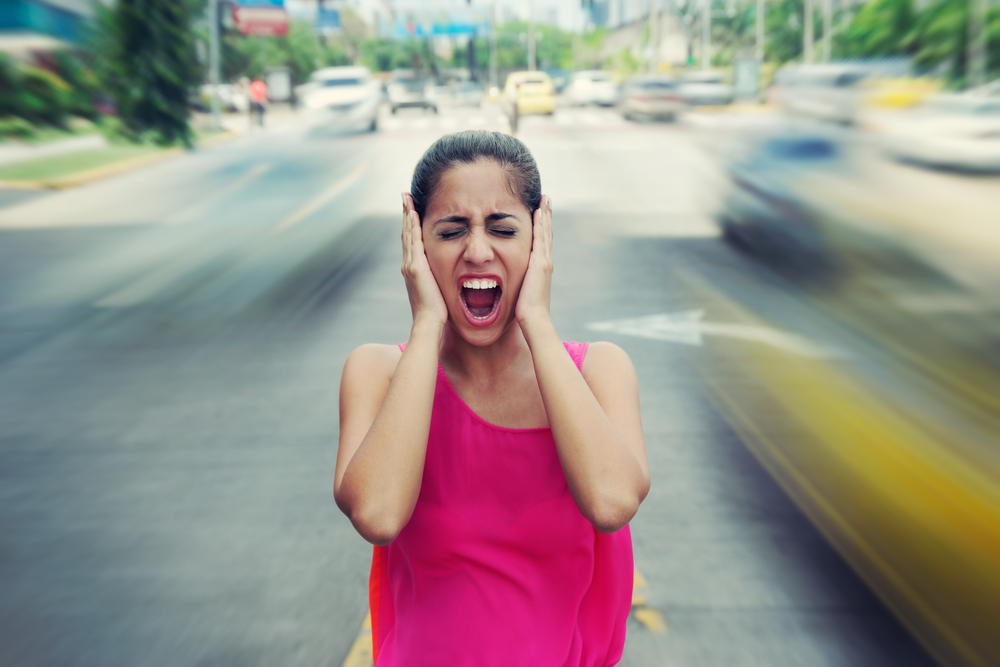Sound is a vital part of our environment, playing a crucial role in communication, perception, and interaction. However, the impact of sound on hearing can vary widely, depending on several factors, including the sound’s level, duration, and the individual’s sensitivity.
In this article, our experts at El Dorado Hearing are demystifying the complex world of noise and explaining how different levels of sound impact your hearing on a daily basis.

Navigating the Path of Sound through Your Auditory System
Before we dive into the world of noise, it’s important to understand how sound interacts with our auditory system. The journey of sound from our environment to our brain is an intricate process, facilitated by the complex structures of our ear.
When sound waves enter the ear, they travel through the ear canal, causing the eardrum to vibrate. These vibrations are then transmitted through the ossicles, three tiny bones in the middle ear, to the cochlea in the inner ear. The cochlea, a fluid-filled spiral structure, contains thousands of hair cells that convert these mechanical vibrations into electrical signals.
These signals are then sent via the auditory nerve to the brain, where they are interpreted as sound. This finely tuned system allows us to experience the tapestry of sounds that make up our world. However, it’s also susceptible to damage from overexposure to high levels of noise.
Understanding the Levels of Noise in the World
The auditory system is designed to process a wide range of sounds, from the softest whispers to loud explosions. However, when sound levels exceed the capacity of the auditory system to absorb and process them safely, hearing damage can occur.
Sound levels, measured in decibels (dB), range from the faintest sound the human ear can detect, typically around 0 dB, to sounds above 120 dB, which can cause immediate harm to hearing. The sounds of your daily life can range anywhere within this scale:
- 30 dB: Quiet whisper
- 60 dB: Normal conversation
- 90 dB: Industrial machinery, heavy traffic, and lawn mowers.
- 120 dB: Sirens, concerts, and firearms.
Exploring the Dangers of Noise on Your Hearing
Noise-induced hearing loss (NIHL) occurs when the delicate hair cells in the cochlea are damaged due to their exposure to loud sounds. Prolonged exposure to sounds over 85 dB overstimulates of these hair cells, leading to their eventual death and the irreversible loss of hearing function they support.
Oftentimes, this damage also presents itself as tinnitus. Tinnitus is the perception of sounds, such as buzzing or ringing, when no external sound is present. While these symptoms typically arise from cochlear damage, the unwanted sounds are generated in the auditory cortex of your brain.
While there is currently no cure for tinnitus, audiologists employ unique therapy options, like tinnitus retaining therapy (TRT), to alter the way your brain processes sound. TRT aims to retrain your brain to categorize the tinnitus noise as a neutral signal that doesn’t require attention, thereby diminishing the distress and impact associated with tinnitus.
Fortunately, noise-induced hearing loss and tinnitus can often be prevented. By avoiding loud environments for extended periods of time, and wearing ear protection when necessary, you can protect the delicate structures in your ear from deterioration.
Restoring Your World of Sound with Hearing Aids
When faced with NIHL, certain sounds or frequencies become difficult to hear. Fortunately, hearing aids allow you to bridge that gap restore your ability to interact with the world of sound.
These devices work by capturing sound with a microphone, converting it into a digital signal, then processing the signal based on the user’s personal hearing loss profile. The processed sound is then amplified based on the individual’s audiogram. An audiogram quantifies your hearing ability at different frequencies, ensuring that the sounds you struggle with are amplified, without over-amplifying all frequencies.
Protecting your Hearing with Preventative Measures
While hearing loss isn’t always preventable, avoiding prolonged durations in noisy environments can help protect your ears from noise-related damage. The first step in protecting your hearing is to get a hearing evaluation, establishing a baseline for your hearing ability.
With this assessment, you can confidently determine any necessary preventative or therapeutic measures to preserve your hearing ability. Our experts at El Dorado Hearing have years of experience helping people maintain and restore their hearing abilities. Give us a call at 702-857-8188 or visit our contact page to get started on your journey to clear and confident communication.



Leave a Reply